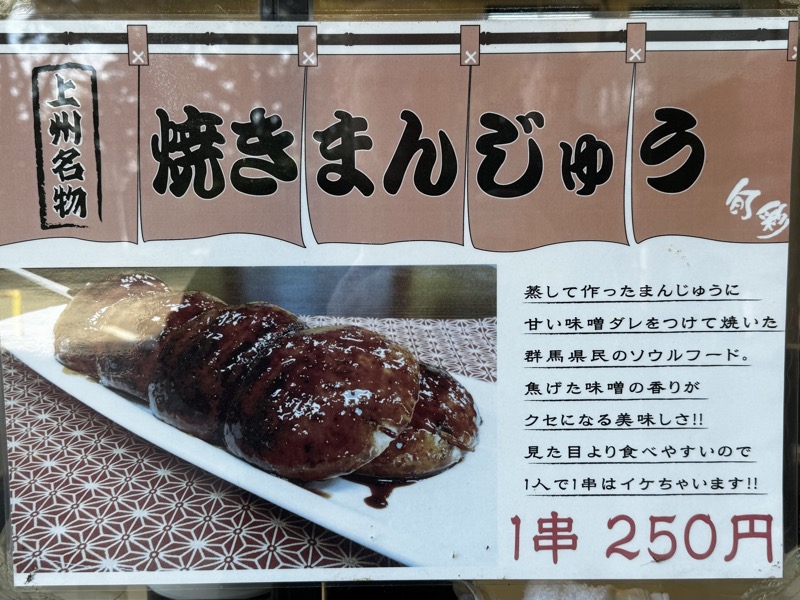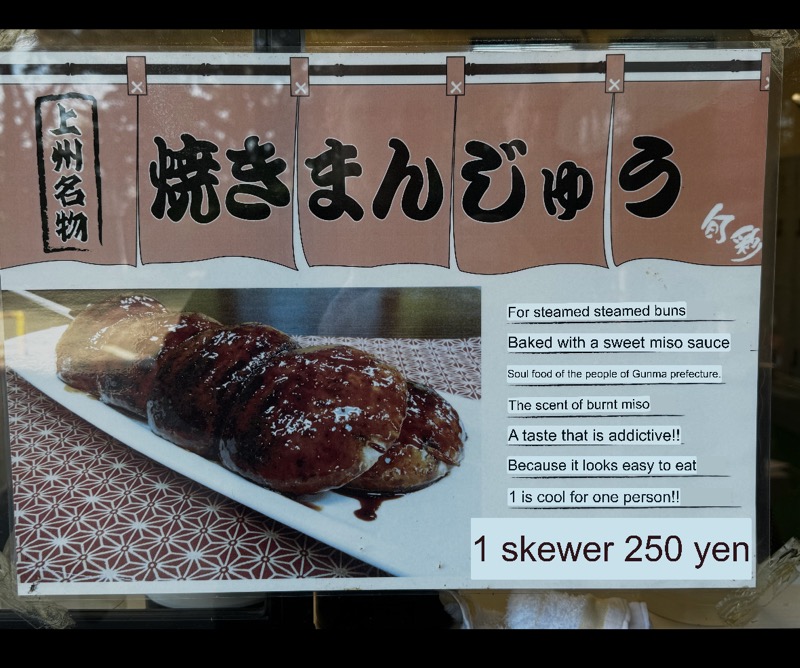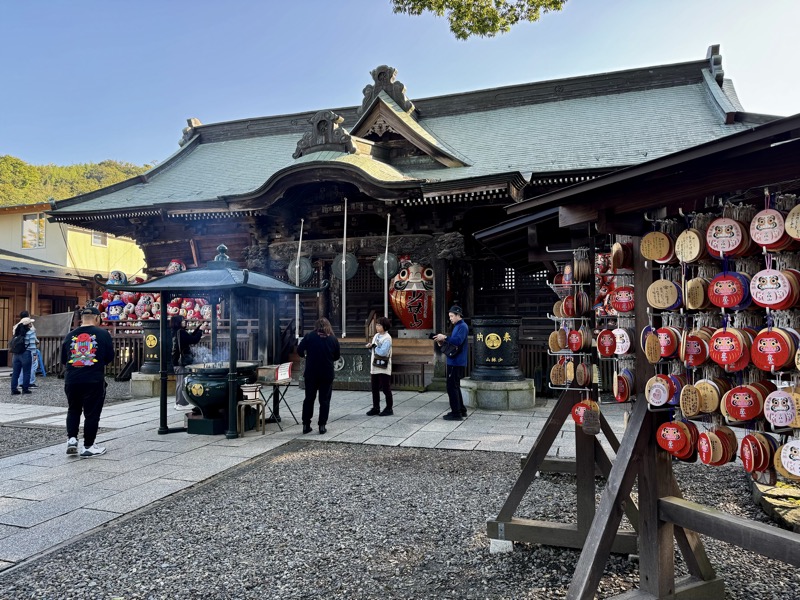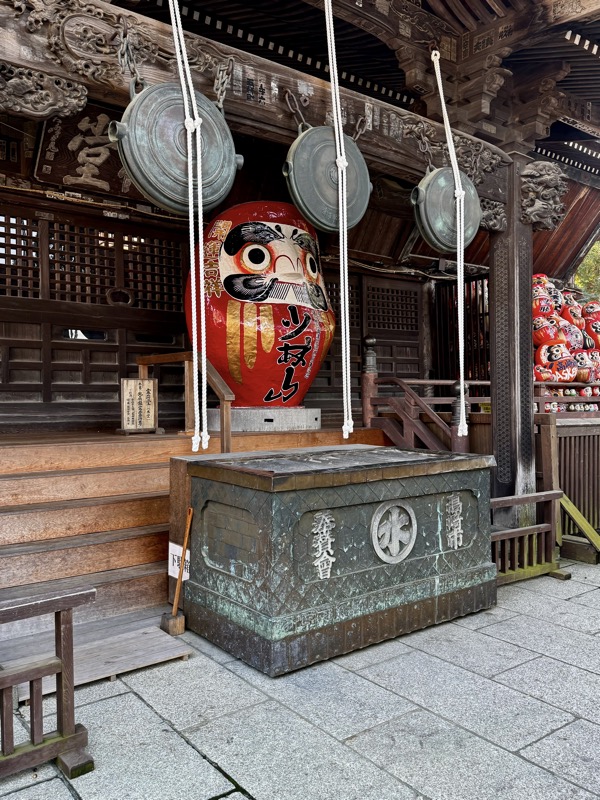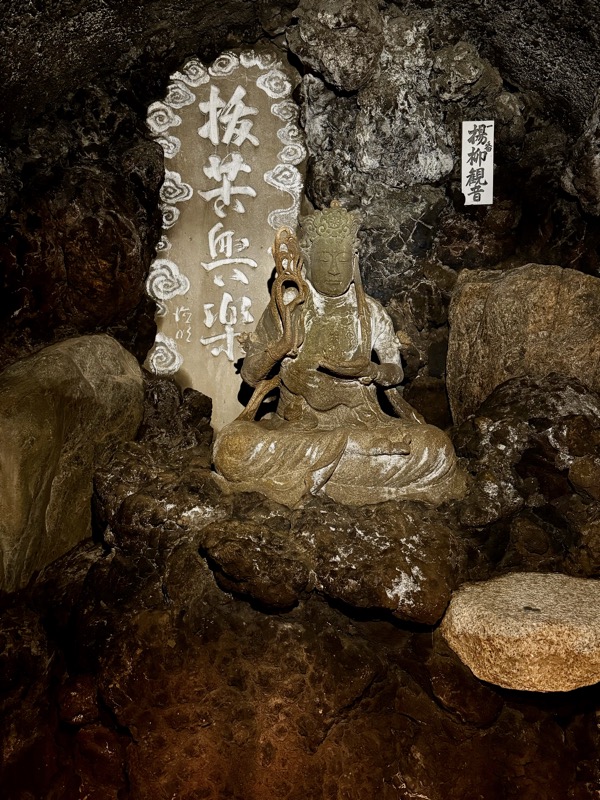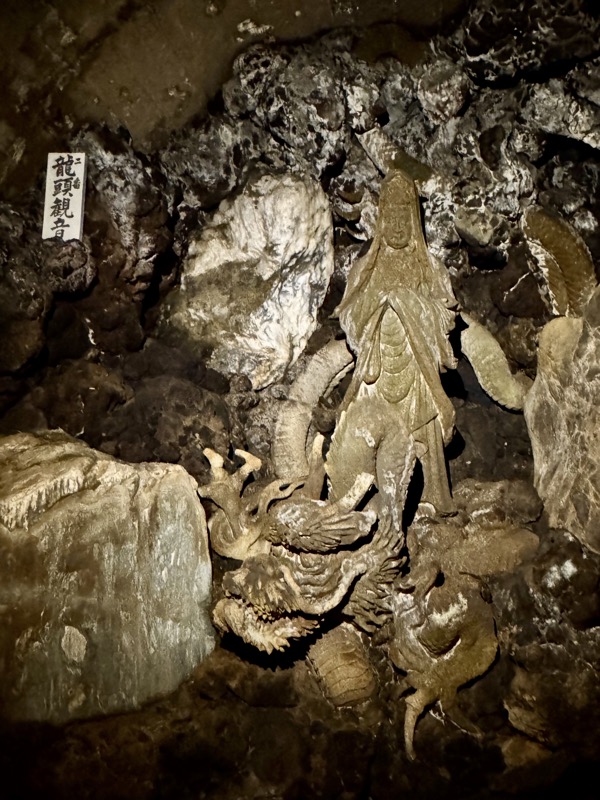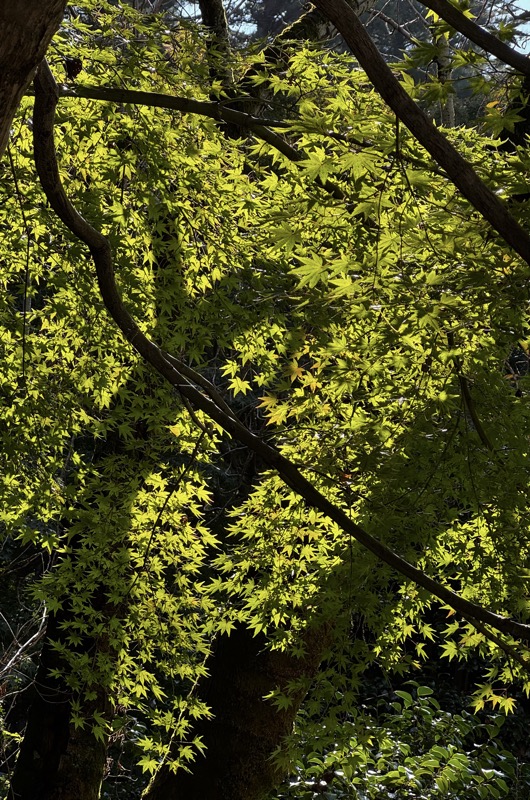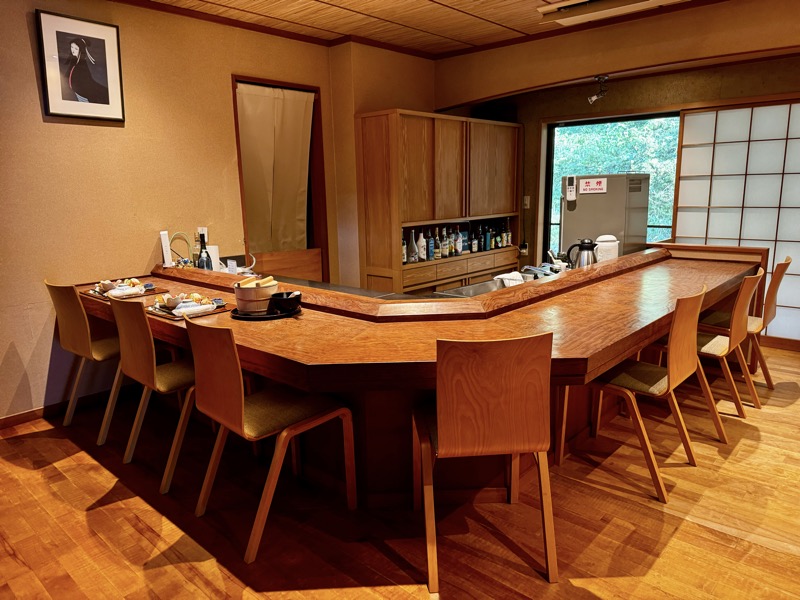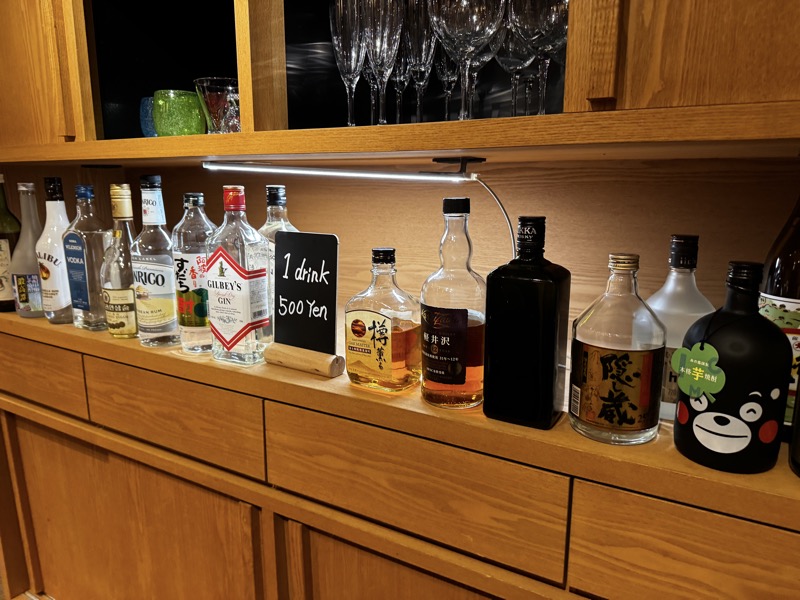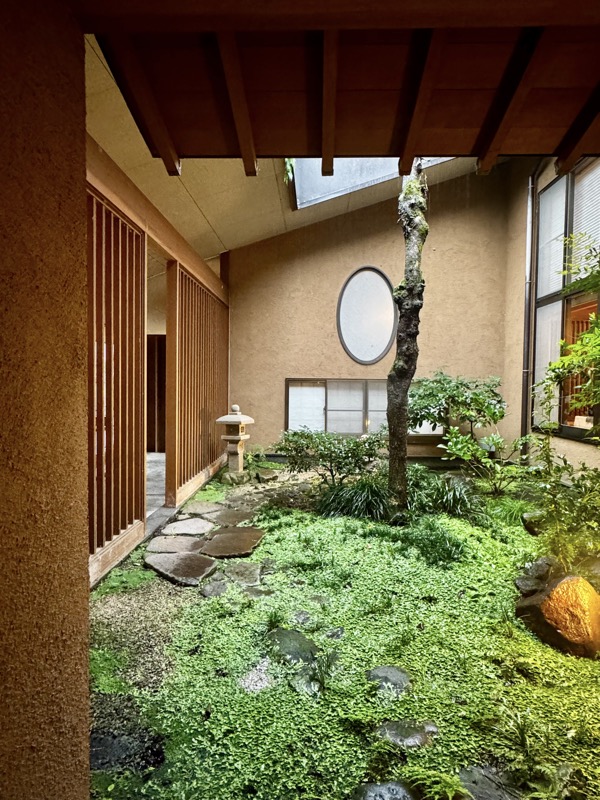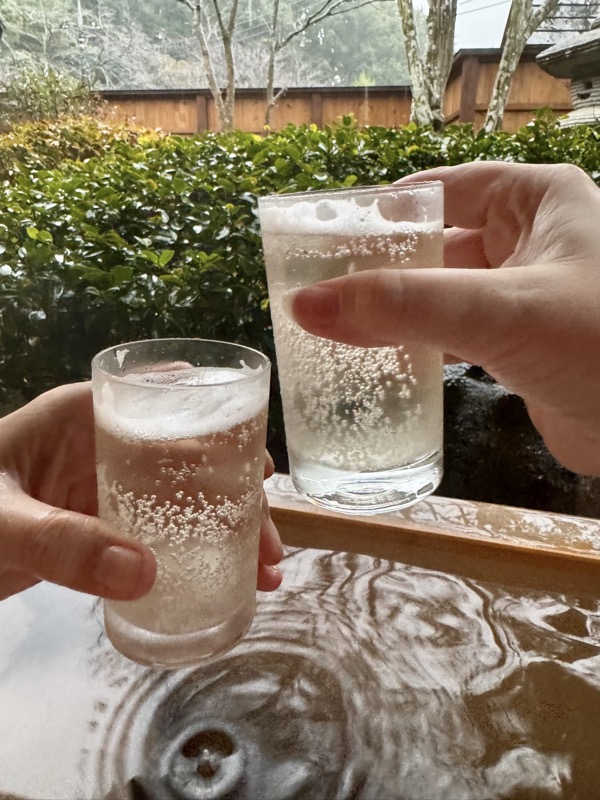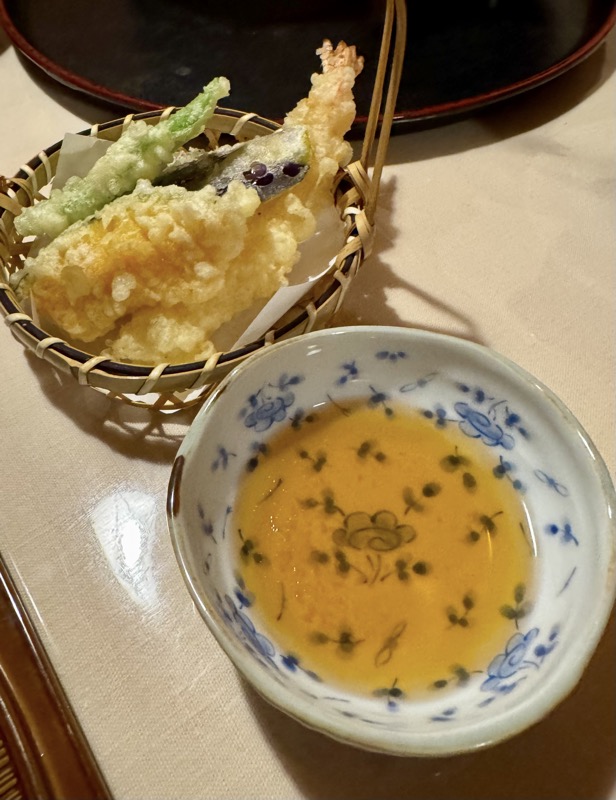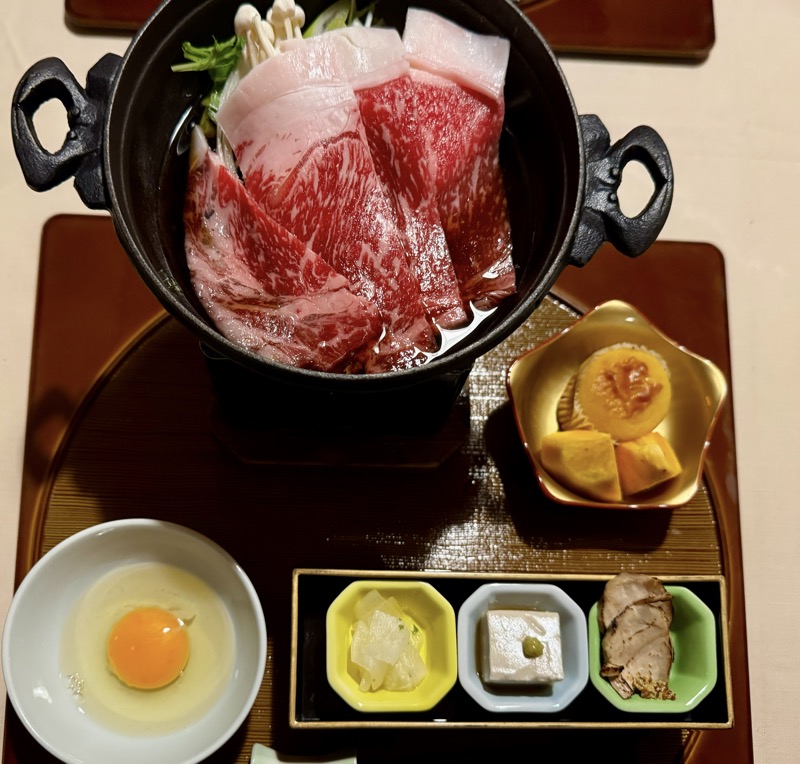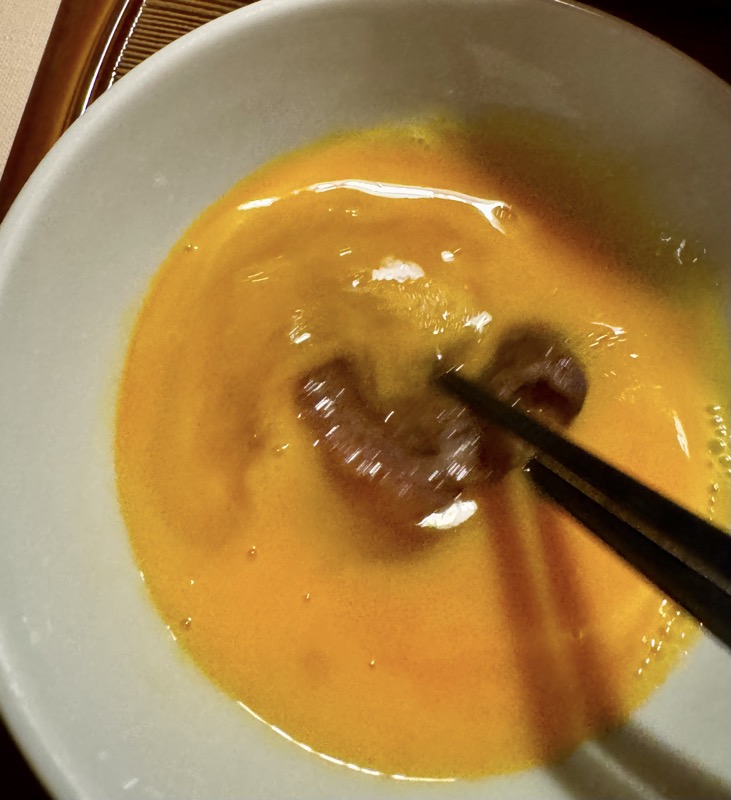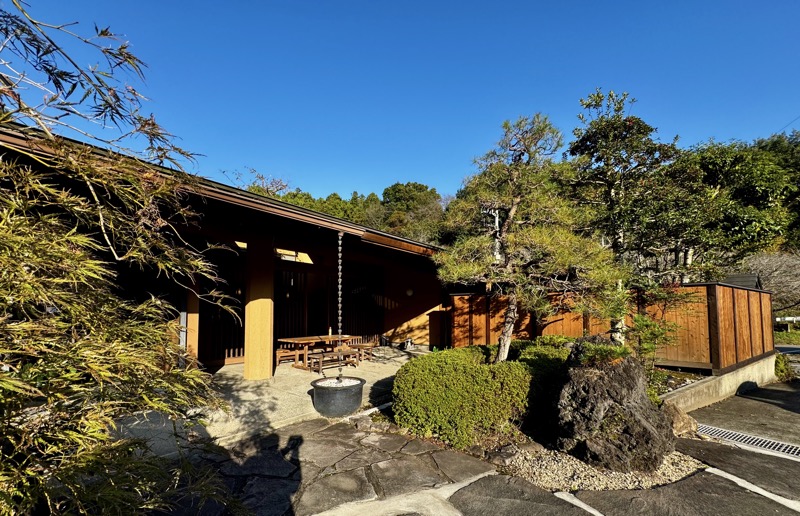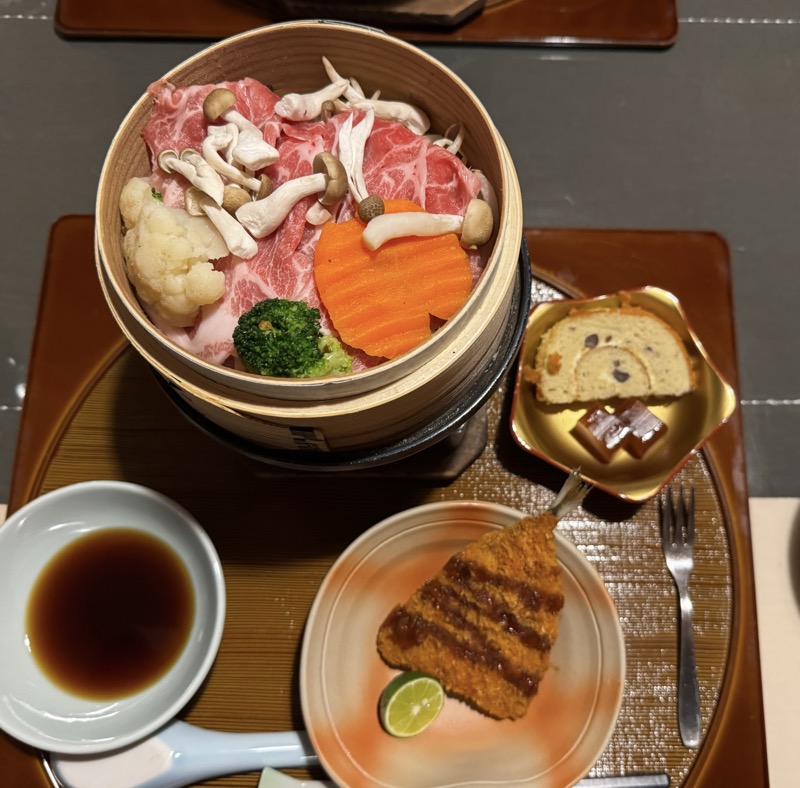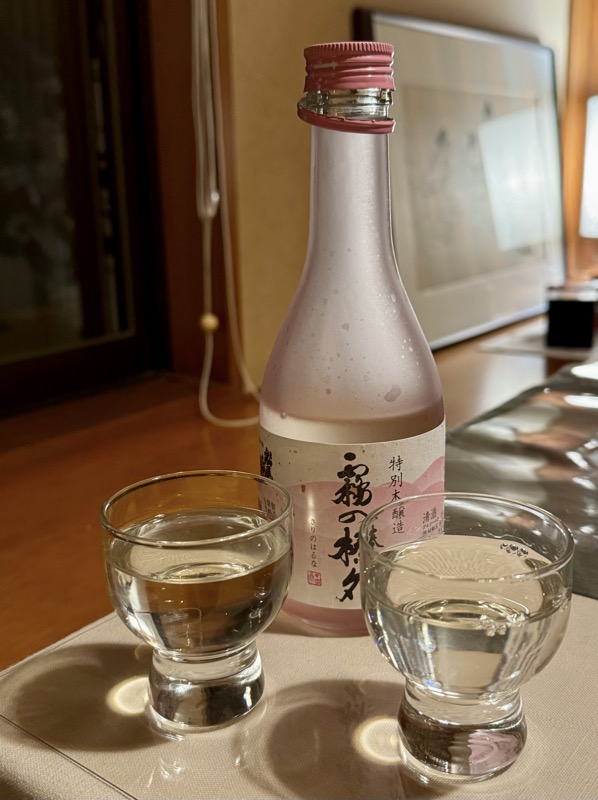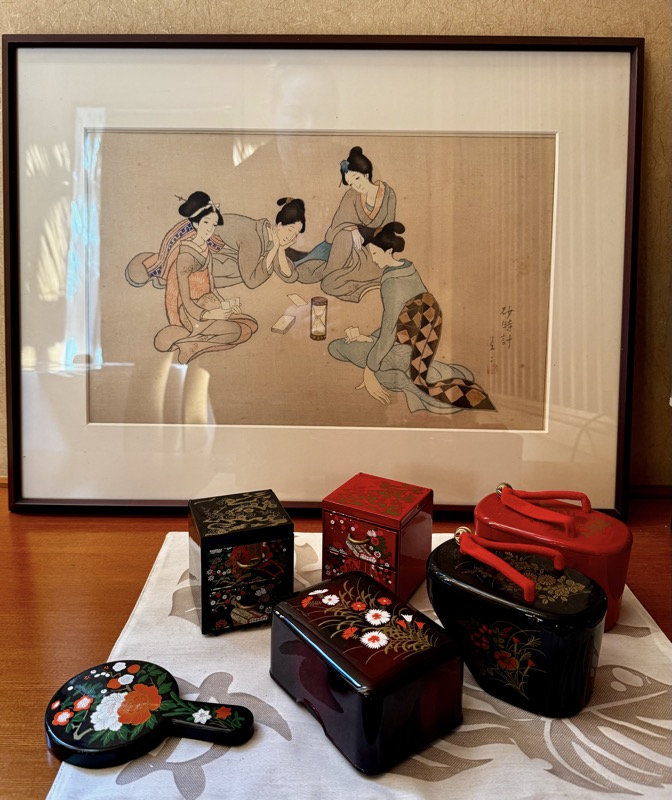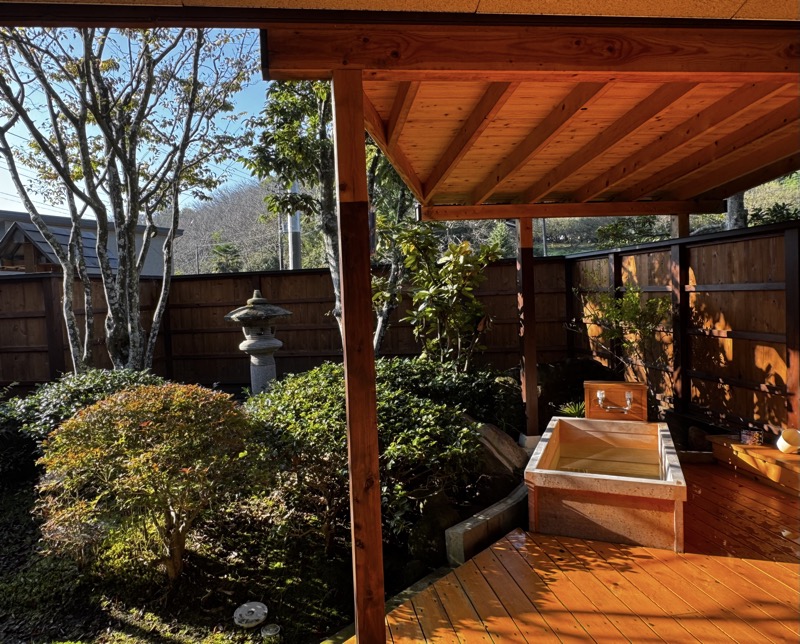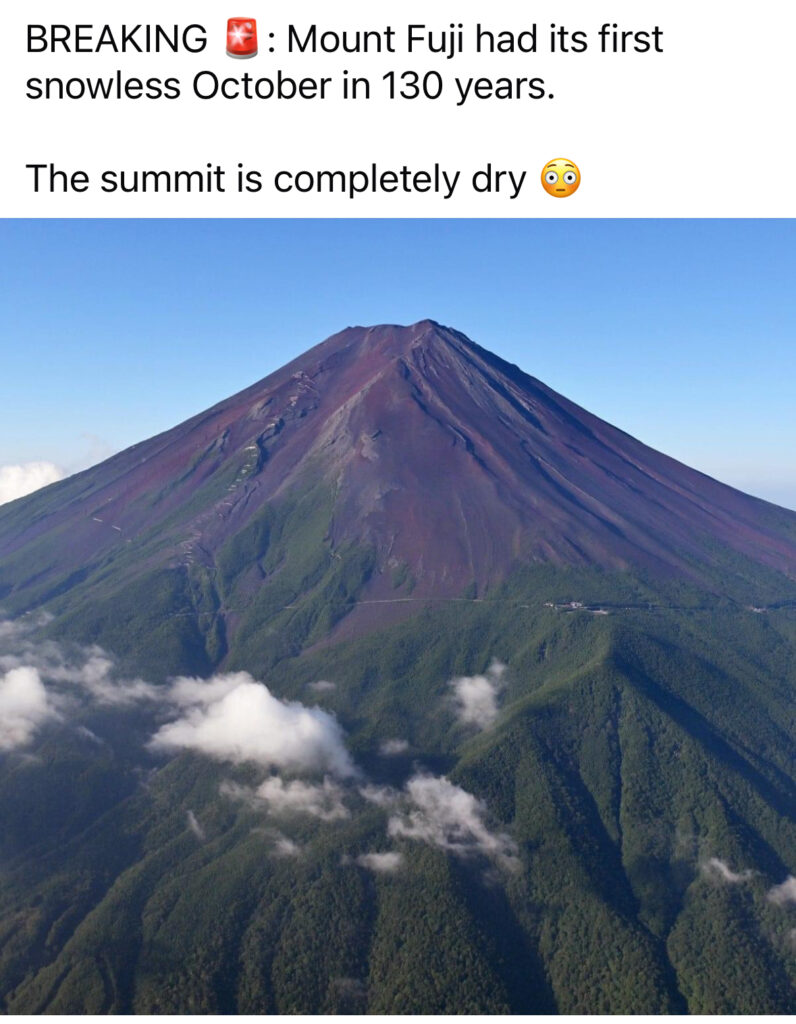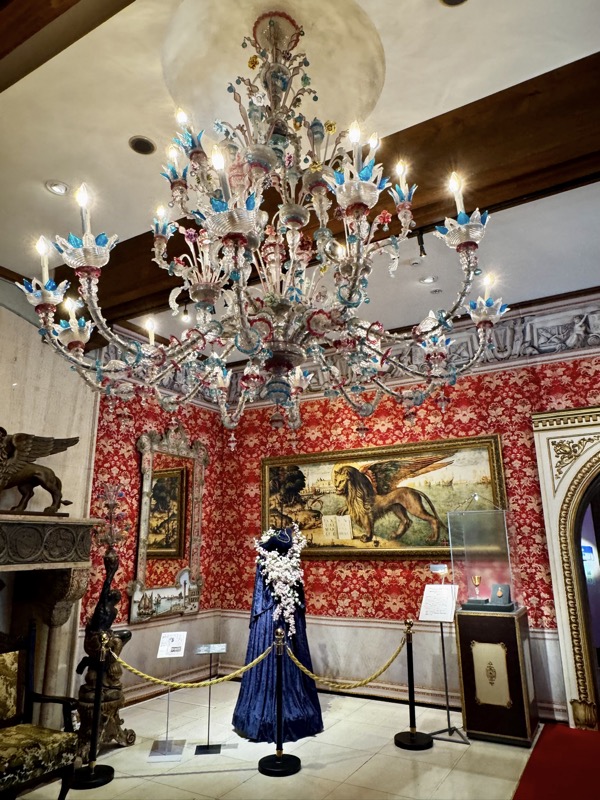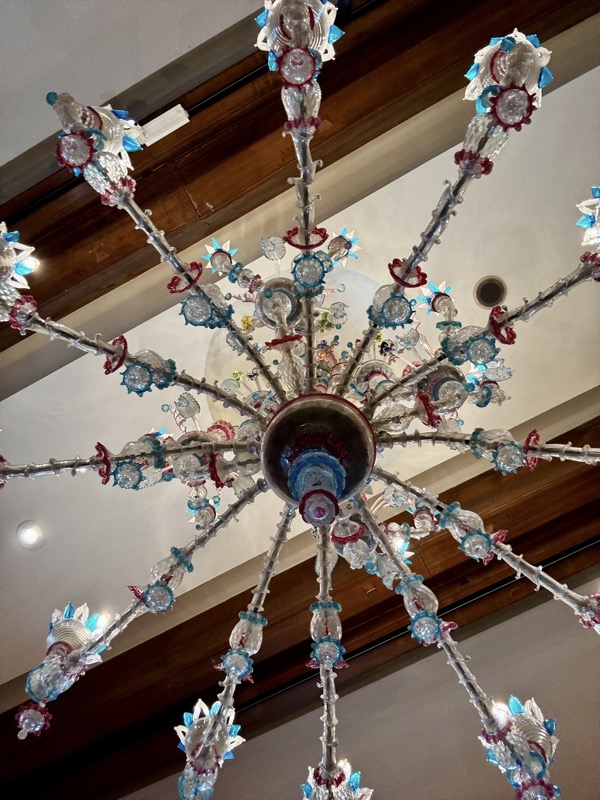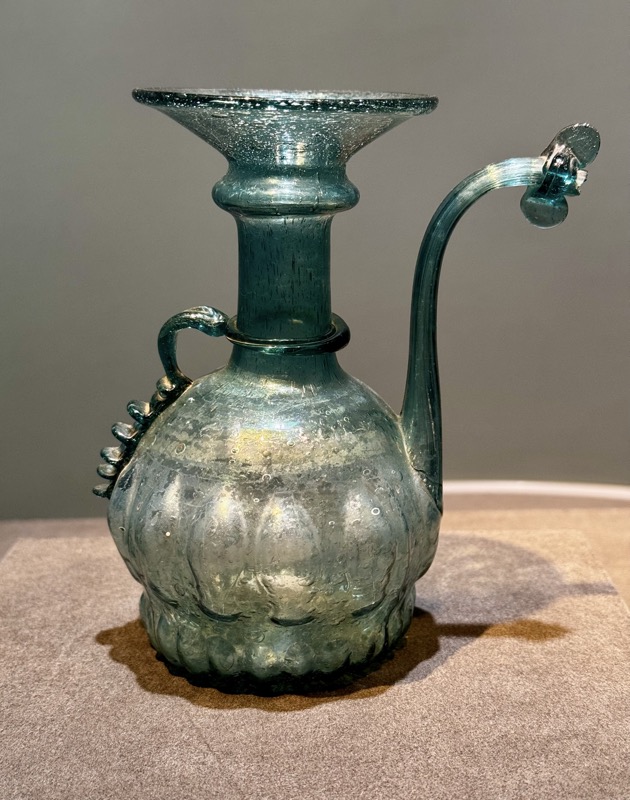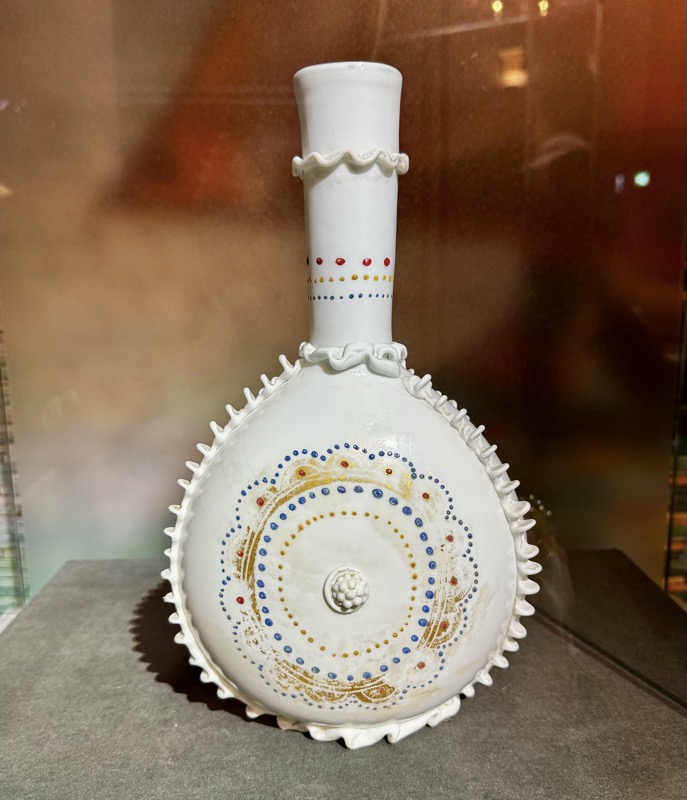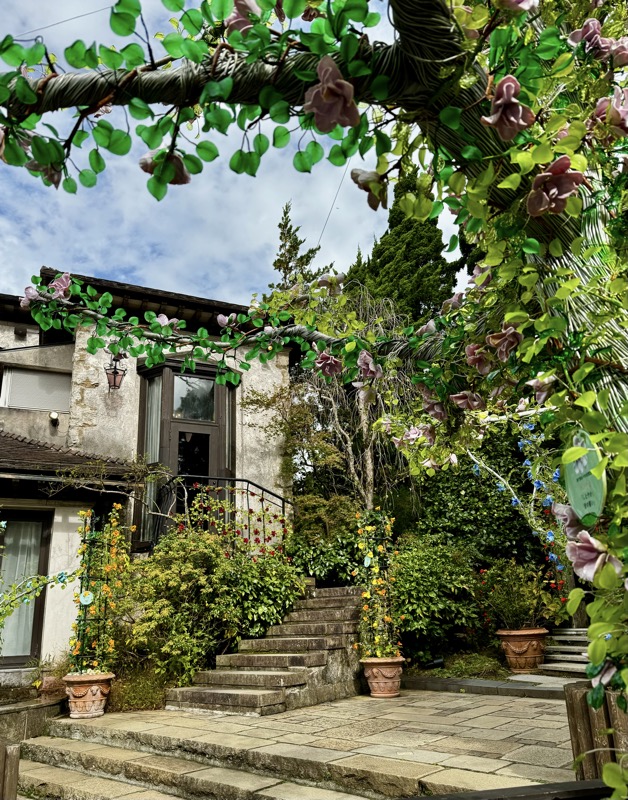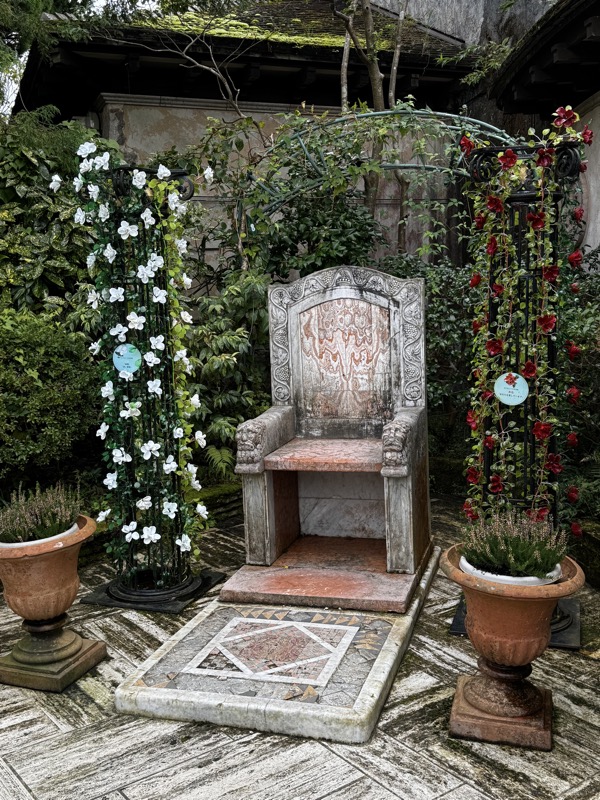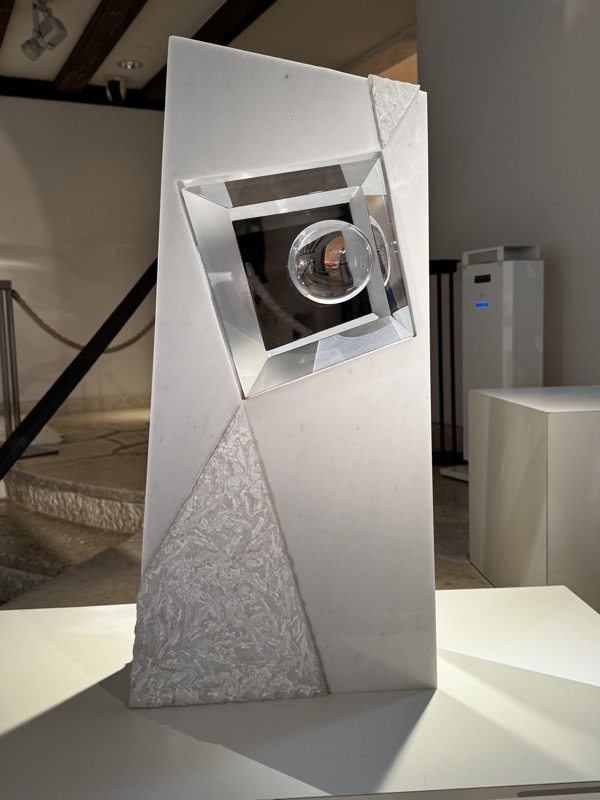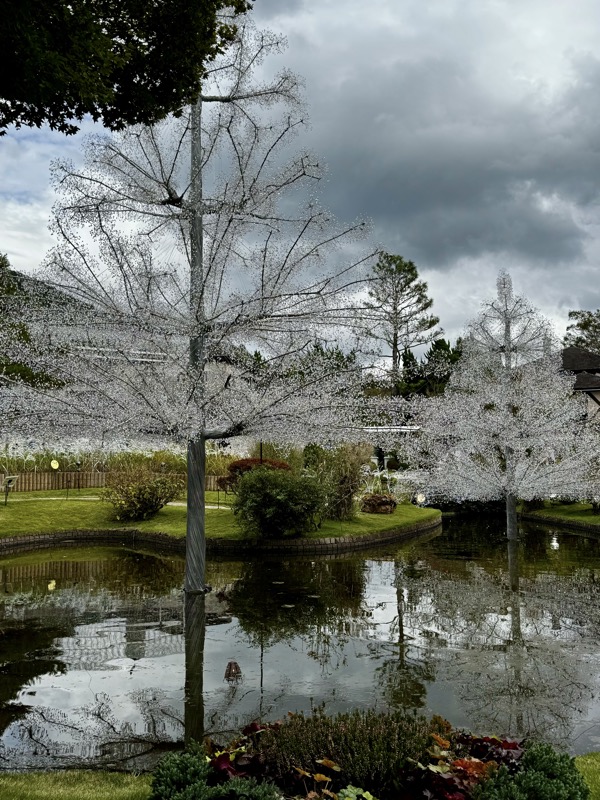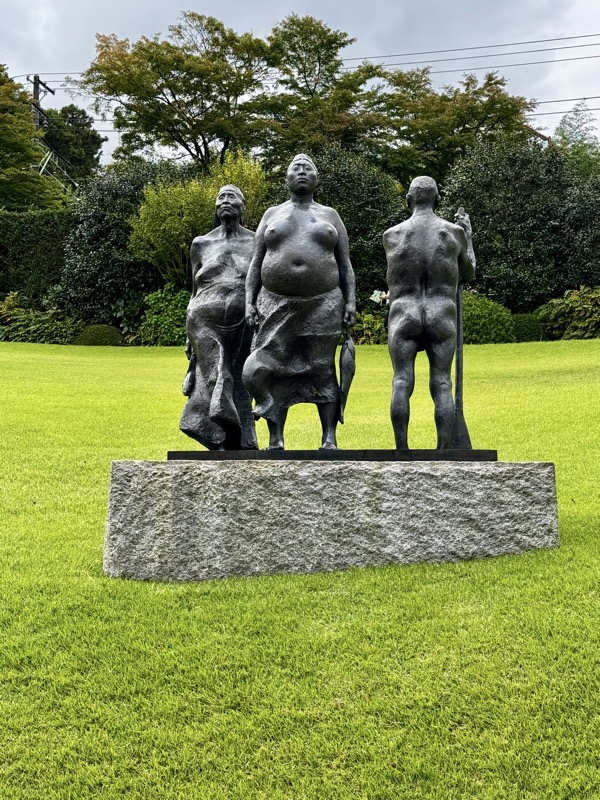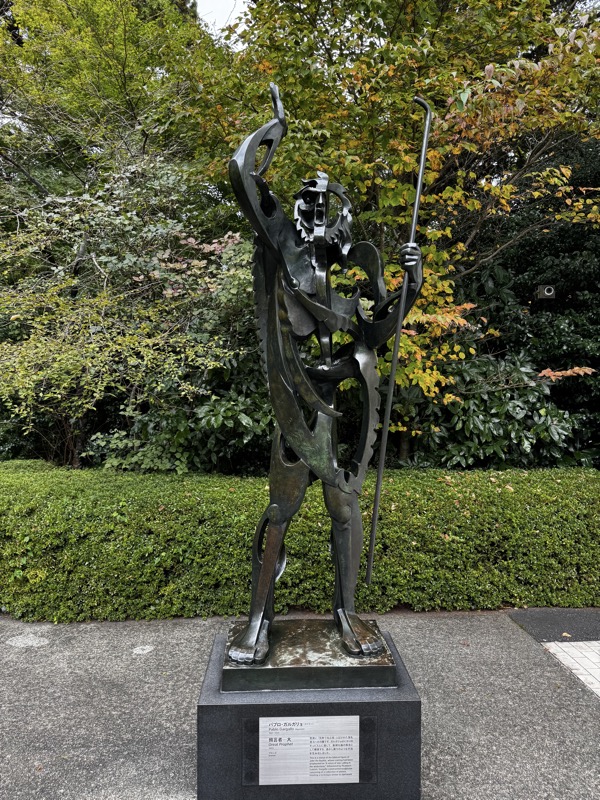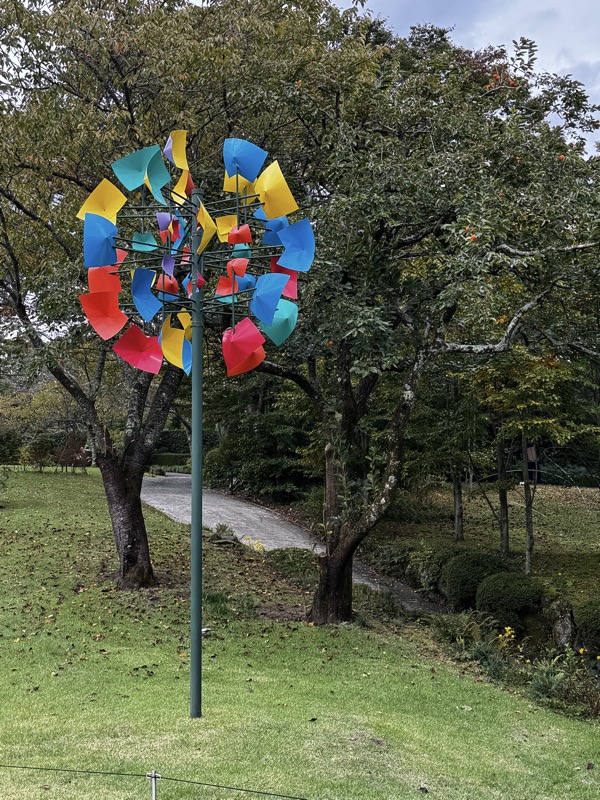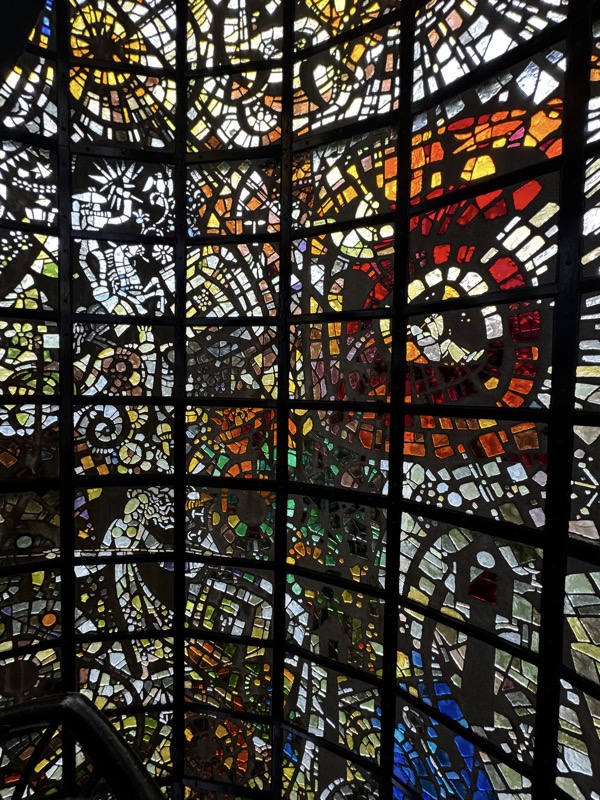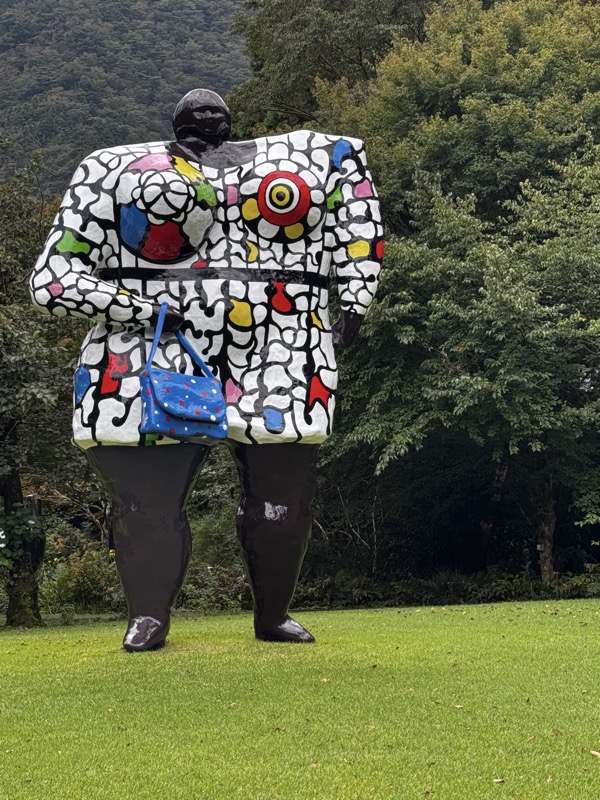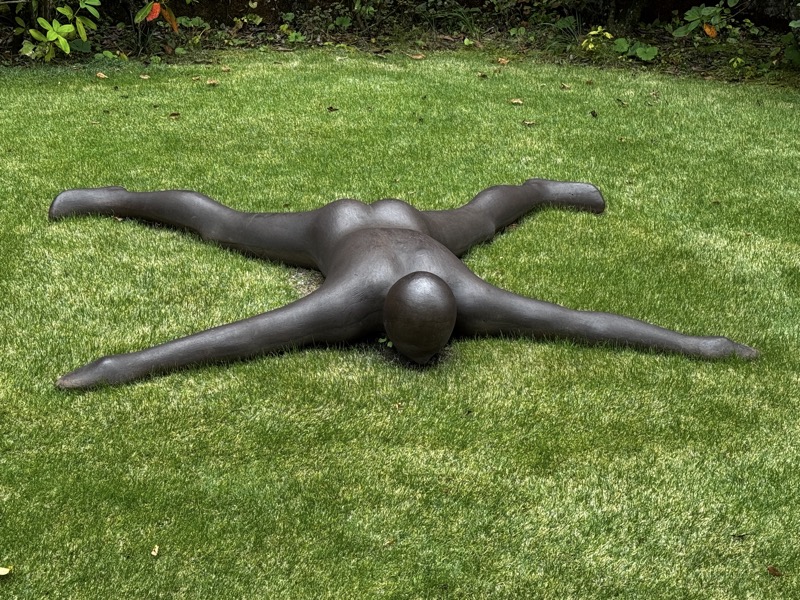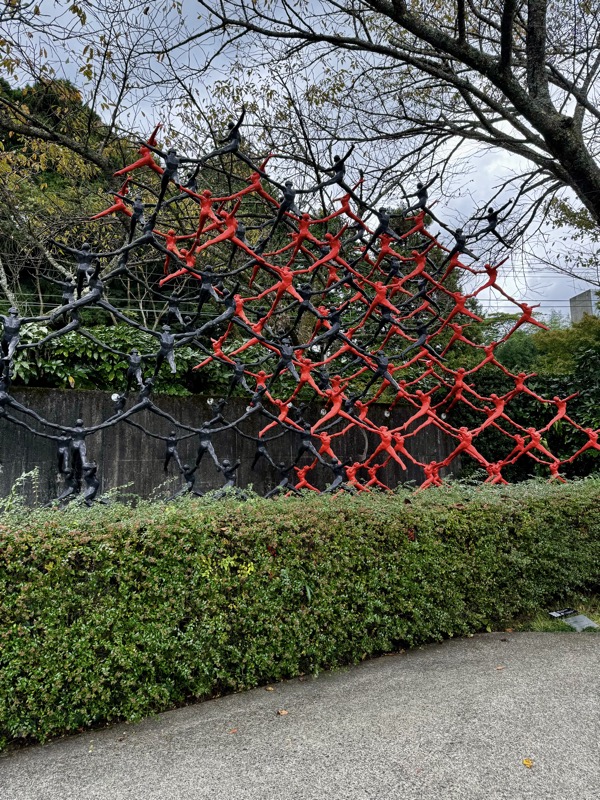Ikaho is a small town of around 4,000 people; together with the villages of Akagi, Komochi and Onogami, they comprise the merged city of Shibukawa. Ikaho is located on the slopes of an extinct volcano and, (no one will be surprised to read this bit seeing we are here!), it is widely renown for its hot springs!
On our way into town, there was apparently a very well knonw ‘Must-Do’ stop at the Ikaho Pudding House Crayon. I found out about it by persevering with YouTube videos done by Japanese content creators – not the easiest way to get your travel hints when nothing is in English, but.. famous puddings, you say? To take to our ryokan? Don’t mind if we do!





So much pudding! Pudding isn’t really a big thing in Australian – as far as I’m aware anyway! I don’t usually have much of a sweet tooth, so don’t tend to seek these sorts of things out when I’m at home. However, Japanese sweets tend to have less overpoweringly processed ‘flavour’ added. I can’t quite explain it, but something here that is melon flavoured, will in fact taste like melon rather than some amped up over-sweetened version of a ‘melon flavour’. Anyway, famous puddings flavoured in Royal milk tea, matcha tea, chocolate, strawberry, salted caramel, lavender; it goes on. Thankfully they have these teeny small taster sized portions so you can choose a few flavours without consuming your body weight in pudding! (Edit: predictably, the salted caramel was the best!)

Throughout Japan, you will see tiny little police stations, they are like teeny one man booths, this is the second police station that I have seen that actually appears to be a larger presence – the other being the one we spent over two hours at, on our last trip (J4), when Mr K was given a moving violation for crossing a solid line on the highway right in front of some cops less than four hours after we arrived into the country! Good times!

I LOVE this little police car! You can see by its sleek design that it is definitely made for high speed pursuits. 


The most well-known Ikaho landmark is the famous stone staircase that runs through the centre of the entire town. The steps number exactly 365 and lead up to the Ikaho shrine; ‘the steps stretch out like aiming for heaven’ is the original plan. The steps are believed to have been here for over 400 years, and were most recently refurbished in 2007, where the new plan is explained (in writing!) as 365 steps leading to visitors to the town 365 days a year! That is Fair. Totally fair. Without tourism, a lot of these small towns would be in real trouble.

Now, I haven’t written much about it at all – I intended to, but got distracted – but I had a total knee replacement in August… nearly 12 weeks ago. Given I live in a low set house (ranch style if you’re an American), there are ZERO steps in my house. So I’ve been doing my physio and doing my hydrotherapy exercises since the surgery, and visited a friend for a weekend who has steps in their house, but that is the most ‘stairs’ that have been in my life since the surgery. Naturally, the best thing I can do here is attempt to walk up all 365 of these steps!
I wasn’t really thinking about whether or not I *should* climb these stairs and was far more focused on whether or not I physically *could* climb these stairs. Which may or may not have been a mistake, I’m not sure. Thankfully we were in no particular hurry and I had the assurance of knowing that there was a wonderful private onsen bath for me at the end of this ordeal if it went poorly.



The town’s onsen waters flow straight down the middle of the street. You can see it here at the base of the steps as the water cascades down the steps, and at various other points further up you can see it gushing down the street through some glass viewing points.


Intermittently at the tops of small flights of stairs, there are terraces for resting, for smoking rooms, or that go off down little alleyways for cafes, restaurants, bunny shops (?) and gaming alleys … it all feels a bit like a fete or carnival with the street food and side show alley type games. The scenery was just magic every time I took a breather to look back down the steps.

The entire street is lined with quaint little shops.

This ‘shrine’ looking spot is actually a rubbish bin! It has been decorated with rubber ducks which seems to be one of the popularly won prizes in the side show alley games.


Also lining the street are a number of public onsens… sadly they are not available for those of us wearing permanent marker.

Cute little winding alleyways built on the slopes that house tiny little cafes, ice cream shops, and other stalls selling local onsen buns.

Taking a moment to rest and look back down the stairs is highly recommended… not just for the break for the broken knees but also for the views which improved the higher up the steps we climbed!



Glorious day for it! The three peaks of Mt Akagi, Mt Myogi and Mt Haruna are well framed from this photo point.


There are several little foot baths where weary tourists can stop and soak their feet on their way up the sacred steps. Speaking of tourists – we accounted for two of the four western tourists we saw all day on the steps. Ikaho is only two and a half hour train then bus trip out of Tokyo, so it’s doable in a day (a long day), but it’s not as accessible as many other destinations where there are better train services. There is no easy train here. To come stay, you’d need to train, then bus, then get your ryokan/hotel to come collect you and your luggage from the bus station. So it tends to be a very popular spot for domestic Japanese tourists, but not so commonly visited by foreigners.


There were many convenient little rest areas on the way up the steps… though I think the town provides them mostly so you have somewhere to sit and consume the onsen buns and ice creams that they want you to buy as you make your way up through the town.

The Komaguchi is the river that branches from the onsen source of the Yumoto. In the stone steps there are four small viewing windows or ‘mouths’ that allow you to see the water gushing down the street – and it’s seriously pumping out a LOT of very hot water.

Also, in the stone steps there are 12 hot spring inns that have been owned by the same families of landlords for over 200 years. Each of these landlords has a zodiac sign inlaid into the stone in brass to locate where their inn is – much like a family crest, only a chosen zodiac sign. I saw a few of them, but was so focused on how many steps we had gone up, that I wasn’t seriously searching for them. This (no doubt very clever, clever) rat is kinda cute.


One area of the steps has a poem by the Akiko Yosano inscribed into the steps, I can’t for the life of me find a translation of this poem on the internets, which is a little disappointing – I’d like to know what it says. Edited to add: The poem is called “The Town of Ikaho” and describes a scene of Ikaho in the early Taisho period (1912-1926), but further than that, a translation I can not find!


Above and below: Some of the carnival / side show alley gaming shops.

We found a little cafe to stop at around the 230 steps up… Mr K needed a coffee and I caught sight of some cute (notably Insta-famous) steamed buns. 



A Daruma sundae… again we find that the sweets here are not so sweet and something labeled as strawberry flavoured, actually taste like strawberries, not just the sickly sweet pretend strawberry flavour you find in ice cream or milkshakes back home. This was strawberry, rose hip and hibiscus flavoured, all made with local produce from the Gunma Prefecture. It was quite flavourful and refreshing.


There are numbers on the steps telling you exactly how many more you have to go started to be encouraging at this point; which was appreciated given they were a little distressing at the beginning when my knee was already complaining at steps numbered 12 and 15! We stopped into some cute little knickknack shops – and there are several of them scattered about the terraces. I saw this cool canvas bag depicting the Seven Gods, which I couldn’t figure out a use for, so I didn’t buy it. Retail remorse has since ensued and I wished I had picked it up. It was only ¥800… but c’est la vie! I’m so not going back up the 240 odd steps to go get one tomorrow!


This little guy is Ishidan-kun and he/she/it/they is the mascot of Ikaho… which should be fairly evident from his little onsen hat and his stairs for an apron! lol



Now, I reckon we have to be all pudding’d out by this point, but they had a neat little insulated bag there that I thought would be useful for the rest of the trip as we are trafficking our saké around, so we picked up two little puddings for after dinner, so I could buy their insulated cold bag.

These were called ‘Stone Steps Pudding’ and were a traditional style egg pudding, and were not sweet at all. A bit like a light vanilla creme brûlée style deal without the sugary crust.

Another zodiac… no metal pig though.

Japanese manhole covers are famous the world over for being works of art. This one for Shibukawa is so famous it can be found on coasters, washcloths, plates, and all sorts of merch.

The last stretch to the top! It was really busy at this point of the steps – the shrine is just at the top of this next stage. I was worried about how slow (and carefully) I was walking and getting in people’s way and holding them up… and also lamenting that I wouldn’t be able to get any pics without people in them.



I stopped to gather my breath and stretch my knee a bit, and held a spot waiting for a break in the traffic. Patience is a virtue I don’t usually posses… until it comes to trying to take a photo without tourists in it! Then I seem to find the will to wait until the people have passed. Worth it!


The Ikaho Shrine… complete with queue of people waiting to pay their respects and ask for the blessings and cast their wishes. Apparently it gets crazy busy here at New Year.



I know in the big scheme of things, walking up 365 steps is not a big deal… but seeing it was so soon after getting huge chunks of my knee removed and bits of titanium and chromium cobalt implanted, and going from not being able to even hobble unaided from my bedroom to the kitchen in my house 12 weeks ago, this felt like a HUGE achievement. So I’m pretty damn happy with my wash!

It should be noted that I couldn’t have gone *back down* those 365 for love or money! Going up is one thing, but going down steps at the moment is still quite another. NOPE. We had to find a circuitous route down via the winding roads that meander in and around the steps to service the hotels. Still, small victories and all that.
On the way out of Ikaho, we made a stop at the Kajika bridge… the bridge is a famous photo stop, being strikingly red in the middle of summer green leaves, stunning when surrounded by autumn foliage, but also looks amazing when covered in snow. I guess this means we need to come back and see it in all seasons.



It feels like that is all a town needs to do in Japan to get people to come by – have some gorgeous Japanese maples carefully planted intermingled with cherry blossom trees, add one strikingly red bridge across a small ravine or creek. Add a couple of food stalls and get some tourists to start sharing photos of it it to make that thing Insta-famous. Build it and they will come!

The red bridges are such an iconic Japanese object that they never fail to be beautiful and feel ‘typically’ Japan.






We 




























